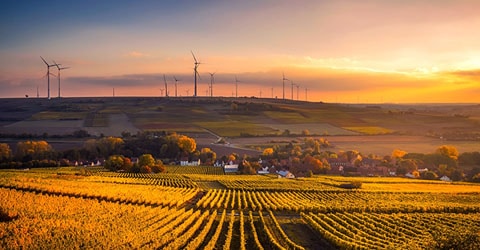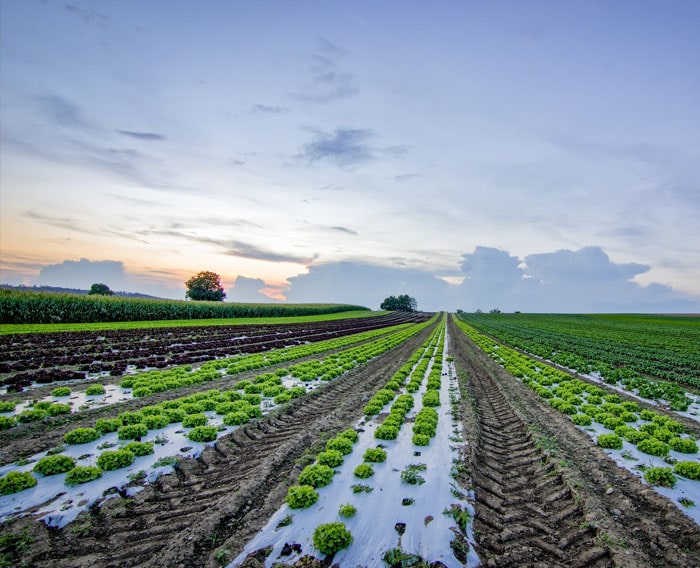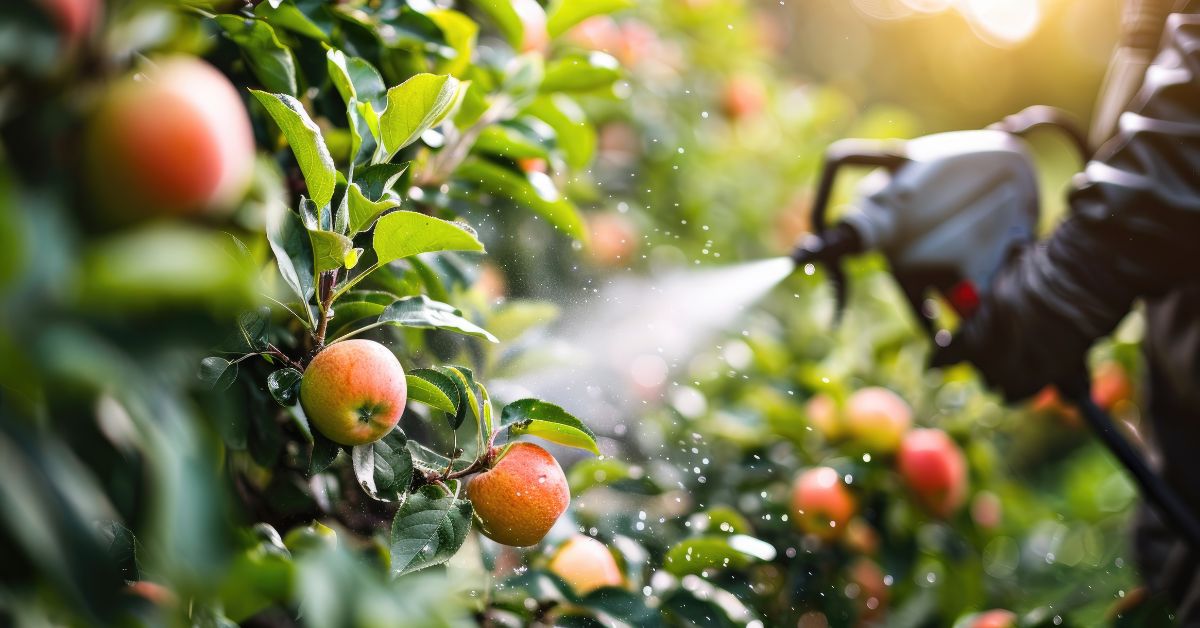

In the past, cultures have created environmental chaos and suffered from it. Throughout history, we humans have created uninhabitable environments. Author Jared Diamond — who won the Pulitzer Prize for his book Guns, Germs, and Steel — has written about this in his most recent book, Collapse. He focuses on several cultures that have created their own downfall by causing environmental changes. Among them are the Mayans, the Anasazi of the American Southwest, and the Easter Islanders. These were all thriving cultures that destroyed the natural ecosystem to the degree that it could no longer support human life. The most profound result in these situations was the impact on the food supply. We need to learn from the past.
Our modern world is dependent on the international movement of food. Human society has never collapsed on a global scale, but then we haven’t had the physical or chemical technology to make that happen, until now. We cannot discuss nutrition without addressing the quality and quantity of a diverse selection of food. If quality food is not available, all other discussion is futile.
How Do Humans Change the Environment?
Over the past ten thousand years, human societies have dramatically changed the environment. The changes were mostly unintended and largely unnoticed because they were so slow that they spanned generations. Now we can clearly see the human impact and have the opportunity to change course if we wish. Human culture has made forests disappear, changed the courses of rivers, altered the atmosphere, and changed the composition of the seas.
Our attitudes toward food are a significant part of this process. Many of our foods are extraordinarily destructive to the environment and are not nutritious. People are often attracted to products that promise specific nutritional benefits without regard to their environmental damage. In some cases, we are focused on imagined benefits of products with only small or even no real nutritional benefit. There are unintended consequences to our limited thinking.
Soy Crops Mostly Feed Livestock
Some environmentalists criticize the growing of soy due to the impact of soya farming. They claim that soybean growing is one of the major reasons for cutting down tropical forests. The expansion of soy plantations into forests is contributing to climate change. Deforestation is responsible for about 15% of all the global greenhouse gas emissions caused by people. Conversion of forests into soy plantations in the Amazon particularly threatens the climate. The problem stems from the continued hunger for meat. Ninety-eight percent of the soybeans grown are fed to animals and only 1 percent is used for human consumption.
Of the soy that is intended for human use, an increasing amount is for use in imitation replacement items, mostly “meat and dairy substitutes” made of soy. The use of these products misses the point of eating a healthy whole food, plant-based (WFPB) diet. These items are a nutritional train wreck. Artificial “meaty-tasting” products made with expeller-pressed canola oil, refined coconut oil, water, yeast extract, maltodextrin, natural flavors, gum arabic, and excessive amounts of salt are unhealthy commercial products. The only real focus in them is the bottom line: profitability, not human health.
Palm Oil Industry and Its Destruction
Another example is palm oil. It has become the go-to butter replacement for vegan products. Manufacturers use it in products like ice cream, margarine, instant noodles, cosmetics, soaps, and cookies. Many products do not list palm oil and instead simply call it vegetable oil. Recently, in a local natural foods store in Spain, I started to read labels in a long aisle of crackers and cookies. I avoid refined sugars, so the rejects were adding up fast, but what astonished me was that every product included palm oil. There are no exclusive health benefits in using this oil. It is used simply to produce a specific “mouthfeel.”
Increased demand for palm oil is causing extensive environmental destruction in Southeast Asia. About 90 percent of the palm oil used in the world is being produced in Malaysia and Indonesia. Indonesian plantations alone cover an area the size of the state of Maine, and the area is expanding yearly. The United Nations Environment Program states that “palm oil plantations are currently the leading cause of rainforest destruction in Malaysia and Indonesia.” In addition, The United Nations Environment Program found that the Sumatran orangutan, a critically endangered species, is in very high risk of extinction in the wild as a result of logging and plantation development. We are killing these beautiful animals so that we can have cheap cosmetics and cookies. The orangutan population has fallen by about 91 percent during the last few decades.
Official Indonesian data reveal that illegal logging has recently taken place in 37 of 41 surveyed national parks in Indonesia, some also seriously affected by mining and palm oil plantation development. Satellite imagery from 2006 document beyond any doubt that protected areas important for orangutans are being deforested. The use of bribery or armed force by logging companies is commonly reported, and park rangers have insufficient numbers, arms, equipment, and training to cope.

Big Business Over Health and Environment
The food industry does not want us thinking about the environmental impact of our diet any more than they want us knowing what’s really in it. The Dietary Guidelines for America have always shown the power of big business to dictate government policy on nutrition. From its inception, the food industry has always called the shots.
There is concern that the advisory committee for the 2015 Dietary Guidelines for Americans was considering issues outside of the nutritional focus of the panel. The advisory committee was showing an interest in incorporating agriculture production practices and environmental factors into their criteria for establishing the next dietary recommendations. The food industry was adamant that the advisory committee focused on nutrient and dietary recommendations based upon sound nutrition science. Big food does not want people to consider food as nothing more than a chemical delivery system. They did not want the public distracted by “extraneous factors.”
The extraneous factors were, of course, the environmental impact. In testimony before the advisory committee for the 2015 Dietary Guidelines, Miriam Nelson, a Tufts University professor, said, “In general, a dietary pattern that is higher in plant-based foods and lower in animal-based foods is more health-promoting and is associated with less environmental impact.” The industry wants us to think that environmental concerns are not nutritional. I disagree. Nutrition is the study of how we relate to our environment through our choices of food and how those choices affect both internal and external health.
Nutritional Standards and Ecology
Scientific concerns regarding the environmental impact of food choices have been kept outside the public eye. The industry concerns that the Dietary Guidelines Advisory Committee “is showing an interest in incorporating agriculture production practices and environmental factors” into their recommendations was the kiss of death. In the next revision of the guidelines, it directed the Obama administration to ignore such factors. The food industry will continue to press their cause with vigor — and cash. A myopic view of nutrition, where food is reduced to biological “nutrient delivery systems” suits the food industry to perfection. It distances food from the environment and sees food as an industrial product, not a natural requirement for life and health, such as water and air.

The modern consumer enjoys low prices and apparent choice through the scavenging of environmental resources and cheap labor. This wasteful, exploitive system undermines environmental sustainability and food security for us all. As local soil resources diminish, reliance on chemical fertilizers deepens. The resulting expense drives smaller farmers out of business and reduces biodiversity. This is the true cost of our present system that is not reflected in the price of the food. To discover the true cost of food, the environmental damage needs to be factored in as well as the direct and indirect subsidies and related health costs. The purchasing habits in the wealthier nations are bankrupting the economies and environments of developing nations. The Food and Agriculture Organization (FAO) states:
Modernization of agriculture has not equally benefited consumers and farmers in the world: rather it has generated winners and losers. . . . The exchange value of food does not take into account the real cost of such systems, so that conspicuous and unreflective consumption is the driver of social and environmental inequality.
The “unreflective consumption” is a result of being uneducated around how food is produced globally. If we are not educated, how can we make sensible decisions? If schools accept sponsorship from fast-food companies and allow junk food to rule the vending machines, how are children to know? We should promote “food literacy” in school and at home.
Food Knowledge
Many children think of food simply as manufactured goods. A recent British study of 1,000 school children aged between 5 and 11 showed some very strange ideas about the origins of their food. Only one out of every three (33 percent) knew that pork comes from pigs . . . and 4 percent thought that pigs were the source of potatoes. Three in ten (28 percent) did not know that carrots grow underground. When I have spoken in some schools, the level of disconnect between what is eaten and where it comes from is seriously distorted. I have heard that food is “yucky” if it was grown in dirt and that food is “made at the store” or “in a factory.” (These last statements, sadly, ring true.) And yet the young are interested in the state of the environment. They simply don’t connect it with food.
In a recent UK study, it was found that 82 percent of children aged 7 to 14 years rated learning about green issues as very important, putting it ahead of science, history, IT, and art. Around 62 percent wanted to learn more about wildlife and nature, and 47 percent wanted to learn more about where food comes from. Almost all the children were worried about people damaging the planet. An American poll with a sample of 500 preteens showed that 56 percent felt that the world would be irrevocably damaged by the time they grew up. To help, we can educate children to avert and repair environmental damage. The connection between food and the environment is a practical place to start.
When any organism (in this case, man) offends the natural order, there is an account to be settled. This is not a moral directive from an angry god; this is simple cause and effect. When we eat as if life matters, we honor all relationships between animals, soil, plants, the ocean and the air, and ourselves.
It is difficult to point to the exact moment when we began our steady pull away from knowing about our food. The growth of urban areas and the domination of urban culture happened slowly over several decades. The mass marketing of our food and the erasure of seasonal or regional eating has moved us into a nutritional gray zone. The food in Amsterdam and the food in St. Louis begins to look, smell, and taste the same. It is a dream come true for the food industry.
All this has happened at the expense of the soil we depend on. As industrialized agriculture grows, it continues to leave destruction in its wake. Rivers, aquifers, and lakes become bereft of life and simply toxic dumps for the chemical waste of disastrous farming. The damage is not only done to the soil but to those who work on it.
It is the simplicity of a WFPB diet that is based on grains, beans, vegetables, nuts, seeds, and fruits that holds the future for our personal, social, and environmental health. Connecting the dots between the ethical, environmental, and health implications of what we eat needs to be the focus of our education toward an enlightened approach to nutrition. Otherwise, we may suffer the same fate as that ancient Mayans and Easter Islanders, but on a much grander scale than ever imagined.
Copyright 2025 Center for Nutrition Studies. All rights reserved.
Deepen Your Knowledge With Our
Plant-Based Nutrition
Certificate
Plant-Based Nutrition Certificate
- 23,000+ students
- 100% online, learn at your own pace
- No prerequisites
- Continuing education credits













